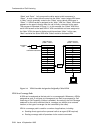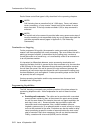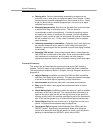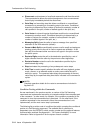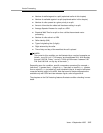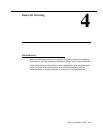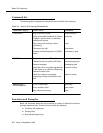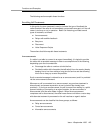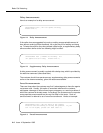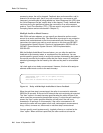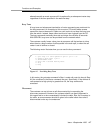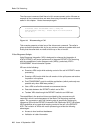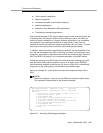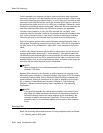
Functions and Examples
Issue 4 September 1995
4-3
The following sections explain these functions.
Providing Call Treatments
In this guide, the term
treatment
is used to indicate the type of feedback the
caller receives if the caller is not immediately connected to an agent, or if the call
center is too busy or not in operation. Basic Call Vectoring provides several
types of treatment, as follows:
■ Announcements
■ Delays with audible feedback
■ Busy tone
■ Disconnect
■ Voice Response Scripts
The sections that follow explain these treatments.
Announcements
If a caller is not able to connect to an agent
immediately
, it is logical to provide
the caller with a recorded message in order to accomplish one of the following,
depending upon the circumstances:
■ Encourage the caller to continue to hold the line.
■ Provide the caller with information that will satisfy his or her needs, thereby
keeping him or her from waiting a long time for service and also allowing
him or her to hang up as soon as possible.
Such a recorded message is referred to as an
announcement
, and it is provided
via the
announcement
command.
Whenever a call is connected to an announcement, any previous treatment is
discontinued, and answer supervision is sent (unless it has already been
provided). If, during an announcement, the call is moved from waiting in a split’s
queue to alerting or connecting to an agent’s station, the announcement is
disconnected, and the caller hears ringback. When the announcement
completes and is disconnected, the caller hears silence until either a vector step
with alternate treatment is processed or the call reaches an agent’s station.
Announcements can be classified into three groups, as follows:
■ Delay announcements
■ Forced announcements
■ Information announcements



